
Along with three fellow motor racing enthusiasts, Steve Matchett – Formula 1 world champion mechanic; accomplished television broadcaster; and best-selling author – is trapped overnight in New York: a fogbound JFK airport. With no sign of the weather improving, talk between the stranded passengers inevitably turns to Formula 1. During the course of their cloistered night, with conversation fueled by regular trips to the departure lounge bar, our protagonists draw on Matchett’s encyclopedic knowledge of grand prix engineering, his easy familiarity with F1 paddock life, to piece together the perfect dream-team Formula 1 race car.By use of his enviable signature talent, his ability to explain complex issues using straightforward, uncomplicated language, Steve Matchett shows us how the various F1 teams have arrived at their current state-of-the-art designs – lays out exactly how a championship winning grand prix car is assembled.Originally published by Orion (of London) in 2004, The Chariot Makers is Steve Matchett’s third book. Along with Life in the Fast Lane, and The Mechanic’s Tale, this compelling, insightful story – its warm text reading as a novel – forms the final installment of the author’s entertaining, timeless, and highly acclaimed Formula 1 trilogy.
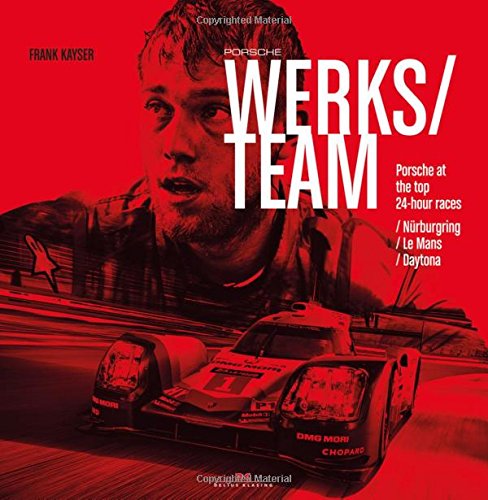
- 24-hour races are the supreme discipline in motorsports. Every year, more than 200,000 fans meet in Le Mans for the race over the weekend. This book goes behind the scenes to document every detail and emotion
- The photographer and author spent three years following the Porsche team
Endurance races are the supreme discipline in motorsports. Several times per year, the best race drivers worldwide are on the tracks for 24 hours. The 24-hour races at the Nürburgring and in Daytona are the toughest tests for man and material. Le Mans as the third run is the icon among the legendary races. In recent years, Porsche set standards in the endurance race world championship – with perfection and passion.
Star photographer Frank Kayser and his team observed the delicate and deeply exhausting work of the Porsche team for three years. The world-famous photographer was allowed where other press photographers were not: in the pit, in the pit lane during the change of tyres and drivers, in the closed off areas of the racers’ quarters. His photos show the stress, the top performance, the eternal night, and the success of perfection.
With photography by Keyser, detailing a world previously unseen by outsiders, and a passionate text by journalist Heike Hientzsch sketching the participants’ emotions, this book illustrates the true nature of endurance races – the tension, exhaustion, and the dedication.
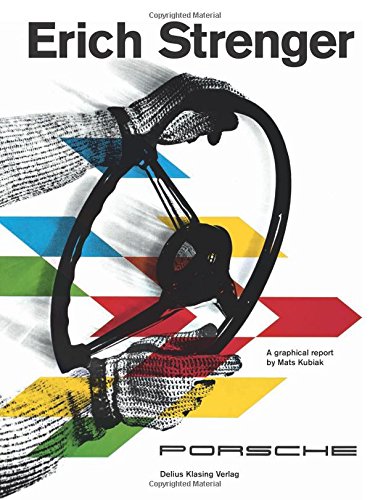
Erich Strenger (1922-1993), an author, photographer, designer, and illustrator, left his mark on the look of Porsche during the company’s formative years in the early ’50s and ’60s with a design language that, for the most part, continues to bear his signature to this day. He also created countless print products for this successful sports car maker, including Christophorus Zeitschrift für die Freunde des Hauses Porsche, the brainchild of Erich Strenger and Richard von Frankenberg. Over the course of a collaborative relationship with Porsche spanning more than thirty years, the graphic artist, who started out working alone, founded an advertising agency in the heart of Stuttgart with a staff of up to eleven permanent employees. There, Strenger would later create countless racing posters, much like those he had designed in his early days working for Dr. Ing. h.c. F. Porsche AG as a freelancer in the early ’50s.
Strenger was instrumental in influencing and molding the image of the Porsche brand as we know it today. This book showcases a first-ever comprehensive collection of his work, created over the course of his collaboration with Porsche between 1951 and 1988. This monographic and monothematic publication brings the noteworthy highlights of his work to the forefront, focusing attention on the designer’s approaches and methods.
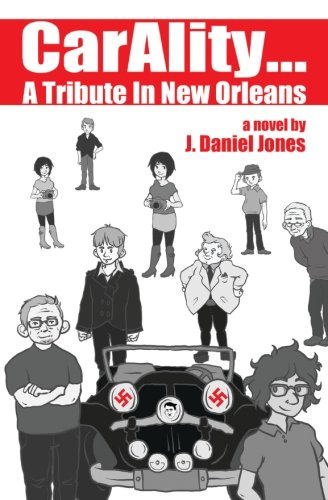
Antoine “Andy” Guidry is a down on his luck cable TV producer living well beyond his means in San Diego, CA.
He had risen through the ranks of camera op, field producer, and senior producer until he finally jumped ship and developed his own show… burning more than a few bridges on the journey. When his show was abruptly cancelled, it left him with little more than maxed out credit cards, severely overdue bills, and an increasingly virulent cannabis vaping habit.
Unsuccessful at trying to drum up work from former “once bitten-twice shy” associates, he is forced to sell his most treasured possession, a 1968 Porsche 911T Targa. Needing the money as soon as possible, he selects the next classic car auction he can find, A-Bears Classic Car Auction in New Orleans, LA. Being a Louisiana native, it feels like he’s returning home and starting all over again. At his age, that’s not a good thing.
Through an unforeseen twist of fate, he finds he is now the only TV producer on the planet with access to the coup of the auto auction universe. A previously undiscovered Mercedes-Benz 770K Grosser Tourenwagen, purportedly used by Adolf Hitler, is also being sold in the same auction as Andy’s cherished 911, and with about as much advance publicity.
Unfortunately, the consigner not only has no interest in television coverage, he’s actually banned it. He claims it’s due to the nature of the provenance, which may be as, or even more valuable than the car itself.
If he can find a loophole that will let him actually cover the auction, this could put him back in the game. He just needs to develop a concept, pitch it, get some front money, field a crew, sneak ’em in, and cover the classic car auction event of the century. Sure, it sounds a bit daunting. But he does, after all, have three whole days to pull it off.
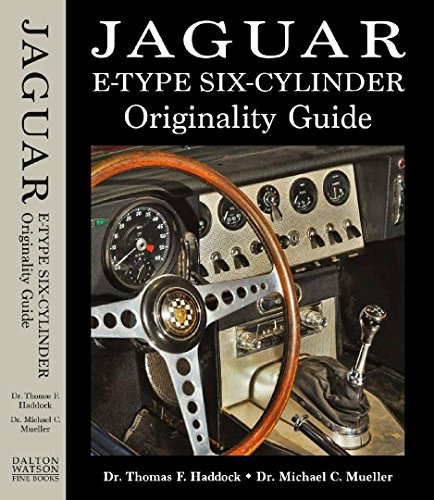
This book on Jaguar E-type originality is based on research spanning almost five decades, and Drs. Haddock and Mueller include extensive new information from an exhaustive four-year examination of the Mueller collection of over fifty E-types. As such, the book is archaeological in nature, based more on observations of cars than on factory publications or other literature. The examination of principally un-restored cars, many partly or completely disassembled and still retaining their original configuration, permitted discovery of much detailed information not reported before. The large volume of data used in the compilation of this work permitted statistical analysis of production changes that would be impossible with a smaller data-set. It significantly advances the understanding of the original configuration of these remarkable cars. A few of the many topics treated in the book are: – Variations between early and late E-type Moss transmissions – An analysis of engine block and head part numbers and configurations, especially the complex and numerous variations of 4.2-liter engine blocks – A review of the myriad of small sheet-metal variations in the tub, bonnet and doors, especially the subtle changes in coupe bodywork in early in 3.8-liter E-type production – Hidden markings on instruments – Review of the subtle variations in the early cooling fan motors – Coupe sun-visor evolution – Markings and tags on carburetors – Markings on the various tires originally supplied on E-types
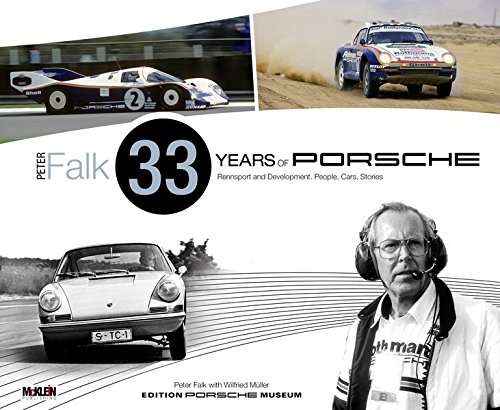
AWAITING PUBLISHER RE-PRINT
Limited Edition Available here
Peter Falk and Porsche, 33 years of passion and devotion: As their race director and one of the leading figures in their experimental department, Peter Falk contributed significantly to the character of the sports cars from Stuttgart-Zuffenhausen – both on the race track and on the road.
From the first 901 right through to the very last air-cooled Type 993, every Porsche 911 bears the signature of Peter Falk. He joined the company in 1959 and quickly rose through the ranks to head various testing departments. In the mid-sixties, Falk also took over the tactical and technical leadership of the factory’s “Rennsport” team. In 1981, he was appointed as race director and led Porsche throughout its most successful era of competition. “His” team won at Le Mans, became World Sports Car Champions, conquered the Paris-Dakar Rally, and was victorious in Formula 1 with the TAG Turbo engine.
In this book, Peter Falk tells of his years with Porsche. A highly respected person in the world of engineering, he relates how it all began at Porsche – when race drivers and engineers huddled together in a shepherd’s hut at Weissach to discuss suspensions, what the Porsche crew experienced during endless testing adventures in both the Arctic Circle and the Sahara, how the race cars at Le Mans roared to the start over country roads, and how a test drive with a Porsche 908 almost cost him his life. He shares his views on every Porsche race car, from the 904 Carrera GTS to the 962C, and describes the race drivers who competed during his reign: Hans Herrmann, Jacky Ickx, Vic Elford, Derek Bell, Hans-Joachim Stuck and Jochen Mass to name just a few. Falk provides a good, long look into the inner workings of Porsche.
Peter Falk shared his personal Porsche stories and fascinating insights with the author Wilfried Müller. The images in this book come from Peter Falk’s private collection, from the Porsche Historical Archive in Stuttgart-Zuffenhausen, and from the vast cache at McKlein Photography. Along with the contributions from former colleagues and race drivers, these images and stories give an in-depth portrayal of Peter Falk’s 33 years with Porsche.

This is the reprinted facsimile edition of the manual issued to crew members of the US Air Force’s sleek SR-71, now available with photos and annotations by former Blackbird pilot Richard Graham.
The Lockheed SR-71 Blackbird was a long-range, Mach 3 reconnaissance aircraft developed by Lockheed’s top-secret Skunk Works. One of the first aircraft designed to have a low radar signature, the SR-71 could map 100,000 square miles from an altitude of 80,000 feet. Operational from 1964 to 1998, it is still the fastest jet-powered aircraft – a Blackbird once completed a Los Angeles-to-Washington, D.C. flight in 64 minutes. Naturally, reigning in all that technology and performance required some know-how on the parts of the pilots and ground crews. This massive volume, the SR-71 Flight Manual, is a facsimile reprint of the official flight manual issued to SR-71 crew members augmented with anecdotes and and descriptions of flight procedures from former SR-71 pilot Col. Richard Graham (Ret.). Divided into seven sections, the book covers in minute detail everything from the SR-71 trainer to normal and emergency operation procedures, navigation and sensor equipment, operating limitations, flight characteristics of the Blackbird, and all-weather operation.
Now the official SR-71 flight manual is not only declassified, it’s (at least partially) demystified as well!

Why do aircraft fly? How do their wings support them? In the early years of aviation, there was an intense dispute between British and German experts over the question of why and how an aircraft wing provides lift. The British, under the leadership of the great Cambridge mathematical physicist Lord Rayleigh, produced highly elaborate investigations of the nature of discontinuous flow, while the Germans, following Ludwig Prandtl in Göttingen, relied on the tradition called “technical mechanics” to explain the flow of air around a wing. Much of the basis of modern aerodynamics emerged from this remarkable episode, yet it has never been subject to a detailed historical and sociological analysis.
In The Enigma of the Aerofoil, David Bloor probes a neglected aspect of this important period in the history of aviation. Bloor draws upon papers by the participants—their restricted technical reports, meeting minutes, and personal correspondence, much of which has never before been published—and reveals the impact that the divergent mathematical traditions of Cambridge and Göttingen had on this great debate. Bloor also addresses why the British, even after discovering the failings of their own theory, remained resistant to the German circulation theory for more than a decade. The result is essential reading for anyone studying the history, philosophy, or sociology of science or technology—and for all those intrigued by flight.

Two Summers offers a fresh, revealing and highly personal window into the culture of Grand Prix racing as it was during the 1954 and 1955 championships. The core of this book is devoted to individual portraits of the twelve races that comprised the 1954-55 seasons in which the W 196 R participated. Of those races, Fangio won seven and Moss won two.
With its carefully-crafted observations and conclusions, given added drama by its richly-detailed illustrations, there are numerous examples of the energy and dynamic nature of these racing seasons â?? not the least being abundant evidence that Fangio was indeed the ultimate master of the art and science of racing a Grand Prix automobile, and that the W 196 R was the instrument with which he honed his skills. This book captures the decisive moments when victory – hanging in the balance – was tilted towards Fangio by his own steady hand on the wheel and iron discipline.
The W 196 R’s racing days may be long gone, but it remains a shining star of Mercedes-Benz’ participation in motor sport heritage events worldwide.
It’s this timeless appeal of the W196R that gives this book its vitality, charm and enduring attraction.

How to Restore Suzuki 2-Stroke Triples is the definitive step-by-step colour illustrated guide to complete restoration, and a must-have restoration guide for both beginners and seasoned Suzuki Triple enthusiasts.
If you can still remember the signature of many 70s motorcycles – the characteristic sound and smell of a 2-cylinder 2-stroke engine – then you’ll find pleasure in the knowledge that many of these classics are still alive and well today, in sheds, garages and barns across the country. Many only make an appearance on a nice, sunny day, perhaps attending classic events or taking an early evening summer ride with friends. Buying one of these motorcycles can be expensive, yet find one in need of just the lightest restoration and you may strike a bargain price.
Restoration is not as difficult as it may at first appear, and benefiting from Ricky Burns’ hands-on knowledge and experience, this step-by-step illustrated guide will give any potential restorer all the advice, tips and shortcuts needed to make an economical, easy restoration happen. This book covers dismantling and rebuilding, sourcing parts, special tools, tackling bodywork, restoring engines and mechanical parts, and much more.
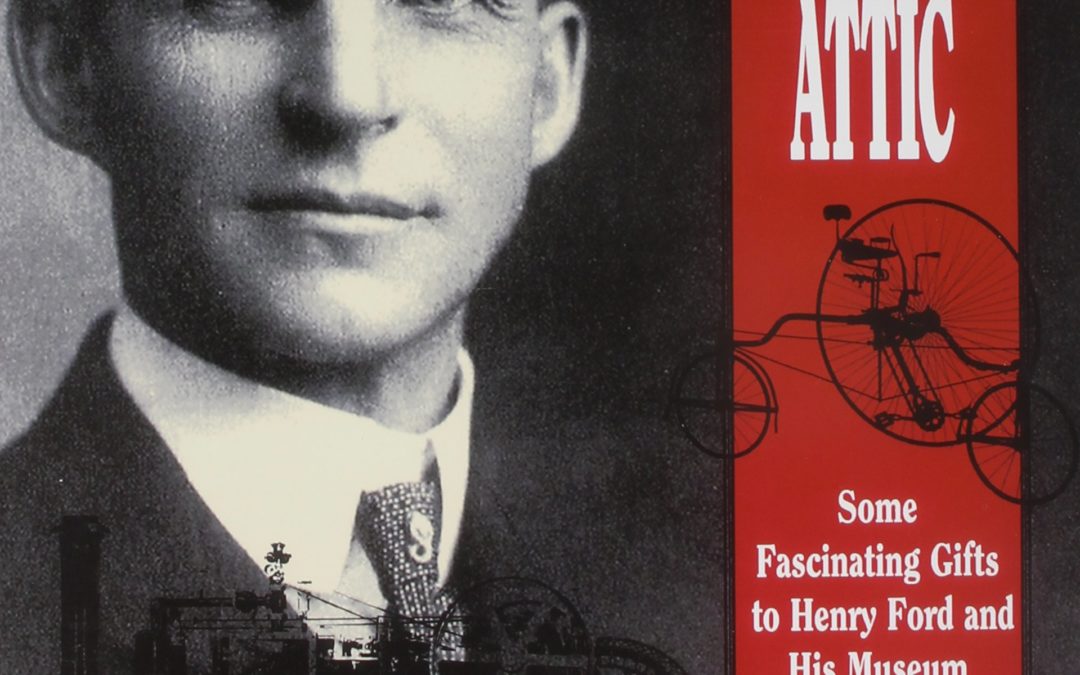
Henry’s Attic provides fascinating documentation of some of the one million artifacts in the Henry Ford Museum and Greenfield Village. The items represent both Henry Ford’s passion for collecting Americana and the astonishing array of gifts-some of great historic value and others of a distinctly homegrown variety-that account for almost half of the museum’s collections. It was the quantity of these gifts and the unusual and even unique nature of many of them that provided the inspiration for this book.
Henry Ford Museum and Greenfield Village, which Ford established in Dearborn, Michigan in the late 1920s, was intended to recreate the slow-paced, rural character of America before the advent of the automobile. The purchases he made and the gifts he was given reflect his desire to document and preserve the lifeways of common people and to emphasize middle-class rural history, as represented by the tools of agriculture, industry, and transportation.
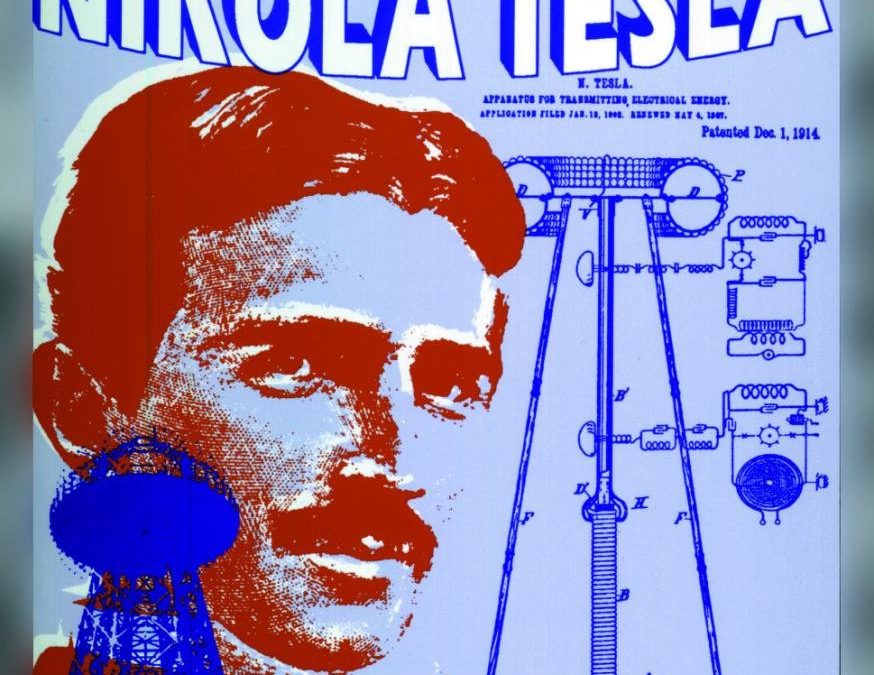
Nikola Tesla’s Electricity Unplugged is a unique anthology of hand-picked Tesla articles, arranged historically, which presents overwhelming and convincing evidence for the reality of Tesla’s high efficiency, low cost wireless power transmission. Following in the footsteps of the editor’s first book in the series, Harnessing the Wheelwork of Nature, Dr. Tom Valone’s book chronologically traces the original intention that Nikola Tesla had for his wireless electricity and how he updated and expanded upon it later on, with reprints of his key articles, to the recent genius engineers and physicists who are now finally bringing this last and most elusive, highly advanced Tesla technology into reality. The Corum article (along with the Peterson article) on the Zenneck wave transmission experiments culminates the viewpoints of all of the book’s contributors. Its purposeful placement as the last chapter of the book, is because this exclusive article publication is a major scientific breakthrough, as testified by the book’s endorsement from Brigadier General Michael Miller, and foretells the understandable, visionary road to the corporate formation of wireless power utilities. Furthermore, this is the first and only book in the world which explains how an electromagnetic wave traveling across the electrically conductive surface of the earth, was predicted by Tesla and Zenneck (two pictures in the book show them together on pages 74 and 381) and why it is the essential missing link of any Tesla wireless transmission theory. Many of the contributors also nicely explain the “surface wave phenomenon” as well as “resonant earth-ionosphere” modes of electrical transmission without wires that compliments the surface wave theory and experiment. Nikola Tesla’s Electricity Unplugged therefore is a treasure compared to any other Tesla reference book currently in print, since it is jam-packed with personal stories of Tesla, such as one reprinted from the prestigious Smithsonian magazine, along with great illustrated slideshows adapted for the book format, the “secret” history of Tesla’s wireless, the real Tesla electric car, high Q resonant power transfer examples being used today by Qualcomm, “Tesla unplugged” explained in an easy-to-understand presentation by a Brookhaven National Lab scientist, wireless electricity article based on scalar waves, even including a couple amazing rigorous equation articles with wireless solutions for the tech audience, a unique and evocative Foreword by Nikola Tesla’s last living direct descendant, all presented in a 457-page paperback book, suitable as a college or high school reader, or simply as an eye-opening, optimistic window onto the electrical genius regarded as the “Master of Lightning,” with a priceless collection of nineteen (19) contributors not available anywhere else.
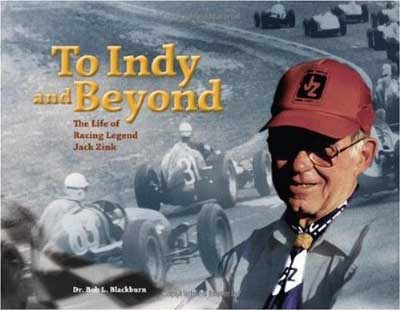
Jack Zink is a legend in the world of car racing. As a driver for more than twenty years, he won stockcar races on dirt tracks, accumulated trophies in off-road dune buggies, and even set a flying mile speed record in a 1957 Pontiac he designed and built for the early NASCAR circuit. As a team leader, mechanic, and engineer, he pushed the limits of technology with his innovative designs for cars that were lighter, lower, and more powerful. Even his failures, such as the attempted use of a turbine engine in a car, opened new doors that others rushed through in the pursuit of speed and durability. Perhaps he is best remembered for his victories at the greatest track in the world, the Indianapolis Motor Speedway, and the greatest race in the world, the Indianapolis 500. From 1950 to 1967, Jack walked shoulder to shoulder with the greatest team owners, mechanics, and drivers in racing history. Twice, his team won the coveted Borg Warner Trophy, in back-to-back Indy victories (1955 and 1956). But Jack was much more than a pioneer in car racing. He raced sailboats. He raced motorcycles. He also was a skilled engineer and businessman, ultimately building not one but two companies into international giants that still dominate the combustion industry with burners, flares, and incinerators that greatly reduce pollution. Even with all these accomplishments, Jack was most proud of his service to his community, especially the Zink Ranch, a 33,000-acre nature preserve in the Osage Hills of Oklahoma that will perpetually provide open space in an increasingly crowded and urban world. This biography weaves all of these stories into a portrait of Jack Zink. Along the way are the friends and family members who were part of the adventure, as well as the challenges and opportunities that drove him forward. Here is the story of one amazing man who lived by a simple code: “The man who wins is the man who tries.”
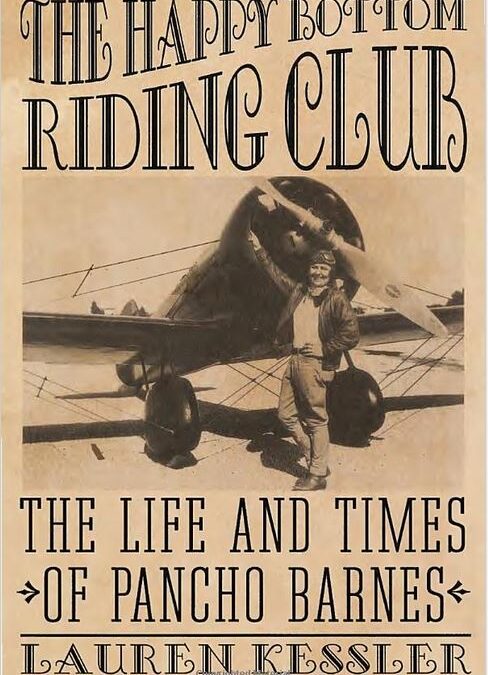
Pancho Barnes was a force of nature, a woman who lived a big, messy, colorful, unconventional life. She ran through three fortunes, four husbands, and countless lovers. She outflew Amelia Earhart, outsmarted Howard Hughes, outdrank the Mexican Army, and out- maneuvered the U.S. government. In The Happy Bottom Riding Club, award-winning author Lauren Kessler tells the story of a high-spirited, headstrong woman who was proud of her successes, unabashed by her failures, and the architect of her own legend.
Florence “Pancho” Barnes was a California heiress who inherited a love of flying from her grandfather, a pioneer balloonist in the Civil War. Faced with a future of domesticity and upper-crust pretensions, she ran away from her responsibilities as wife and mother to create her own life. She cruised South America. She trekked through Mexico astride a burro. She hitchhiked halfway across the United States. Then, in the late 1920s, she took to the skies, one of a handful of female pilots.
She was a barnstormer, a racer, a cross-country flier, and a Hollywood stunt pilot. She was, for a time, “the fastest woman on earth,” flying the fastest civilian airplane in the world. She was an intimate of movie stars, a script doctor for the great director Erich von Stroheim, and, later in life, a drinking buddy of the supersonic jet jockey Chuck Yeager. She ran a wild and wildly successful desert watering hole known as the Happy Bottom Riding Club, the raucous bar and grill depicted in The Right Stuff.
In The Happy Bottom Riding Club, Lauren Kessler presents a portrait, both authoritative and affectionate, of a woman who didn’t play by women’s rules, a woman of large appetites–emotional, financial, and sexual–who called herself “the greatest conversation piece that ever existed.”

Industrial Strength Design: How Brooks Stevens Shaped Your World is a long overdue introduction to the work of visionary industrial designer Brooks Stevens (1911-1995). Believing that an industrial designer “should be a businessman, an engineer, and a stylist, in that order,” Stevens created thousands of ingenious and beautiful designs for industrial and household products — including a clothes dryer with a window in the front, a wide-mouthed peanut butter jar, and the Oscar Mayer Wienermobile. (“There’s nothing more aerodynamic than a wiener,” he explained.) He invented a precursor to the SUV by turning a Jeep into a station wagon after World War II, and streamlined steam irons so that they resembled aircraft. It was Brooks Stevens who, in 1954, coined the phrase “planned obsolescence,” defining it as “instilling in the buyer the desire to own something a little newer, a little better, a little sooner than is necessary.” This concept has since been blamed for everything from toasters that stop working to today’s throwaway culture, but Stevens was simply recognizing the intentionally ephemeral nature of a designer’s work. Asked once to name his favorite design, he replied, “none, because every one would have to be restudied for the tastes of tomorrow.”
This book, which accompanied an exhibit at the Milwaukee Art Museum (the repository for Stevens’s papers), includes 250 illustrations of designs by Stevens and his firm, many in color. Glenn Adamson, exhibition curator, contributes detailed studies of individual designs. John Heskett, Kristina Wilson, and Jody Clowes contribute interpretive essays. Also included are a description of the Brooks Stevens Archive and several key writings by Brooks Stevens.
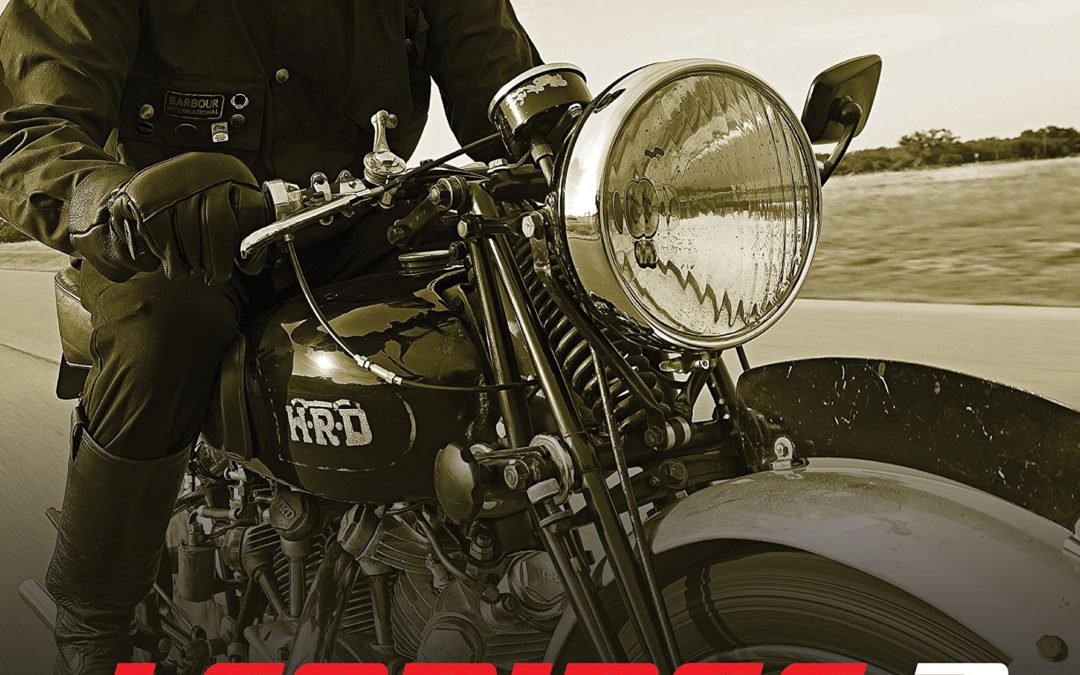
Stories and observation’s from America’s best motorcycle journalist.Peter Egan‘s writing invites you to pull up a chair, pour a little scotch, and relax while he shares with you his tales from the road, his motorcycling philosophy, and his keen observations about the two-wheeled life. His columns and feature articles are among Cycle World‘s most anticipated each month. Egan’s legions of fans know they will always leave his articles with a fresh perspective. Leanings 3 offers a fresh collection of Egan’s motorcycle musings delivered in his signature wise but amusing style. For added perspective, each feature article is preceded by fresh commentary from the author. This is an unforgettable collection of the works of a master writer whose simple adventures of life remind us all why we love to ride.

Should you believe in UFOs (unidentified flying objects)? If you question why the subject of UFOs should be taken seriously, this book provides that answer. Fascinating evidence, new perspectives, and detailed analysis, make this a thought-provoking study for those at every level of knowledge and belief in the UFO phenomenon. Through well-researched and convincing, documented insight, discover compelling individual and mass UFO encounters, giving you a direct appreciation of the possible nature and origin of this extraordinary topic. Learn about pilot and astronaut UFO experiences, strange encounters with UFOs, alien abductions, official government and military declassified UFO documents, and future directions and research needed to better understand the phenomenon. New viewpoints are provided through an objective investigation of the alleged alien visitations of earth and authenticity of the UFO phenomenon. Should you believe? Find out.
Autobooks-Aerobooks 2900 W. Magnolia Blvd. Burbank, CA 91505 (818) 845-0707 Hours: Tuesday-Friday 10:00 AM – 6:00 PM Saturday 9:00 AM – 6:00 PM "Cars & Coffee" on Saturday morning! Closed Sunday and Monday Accept Credit Cards YES, We have Gift Cards - Click Here...




















